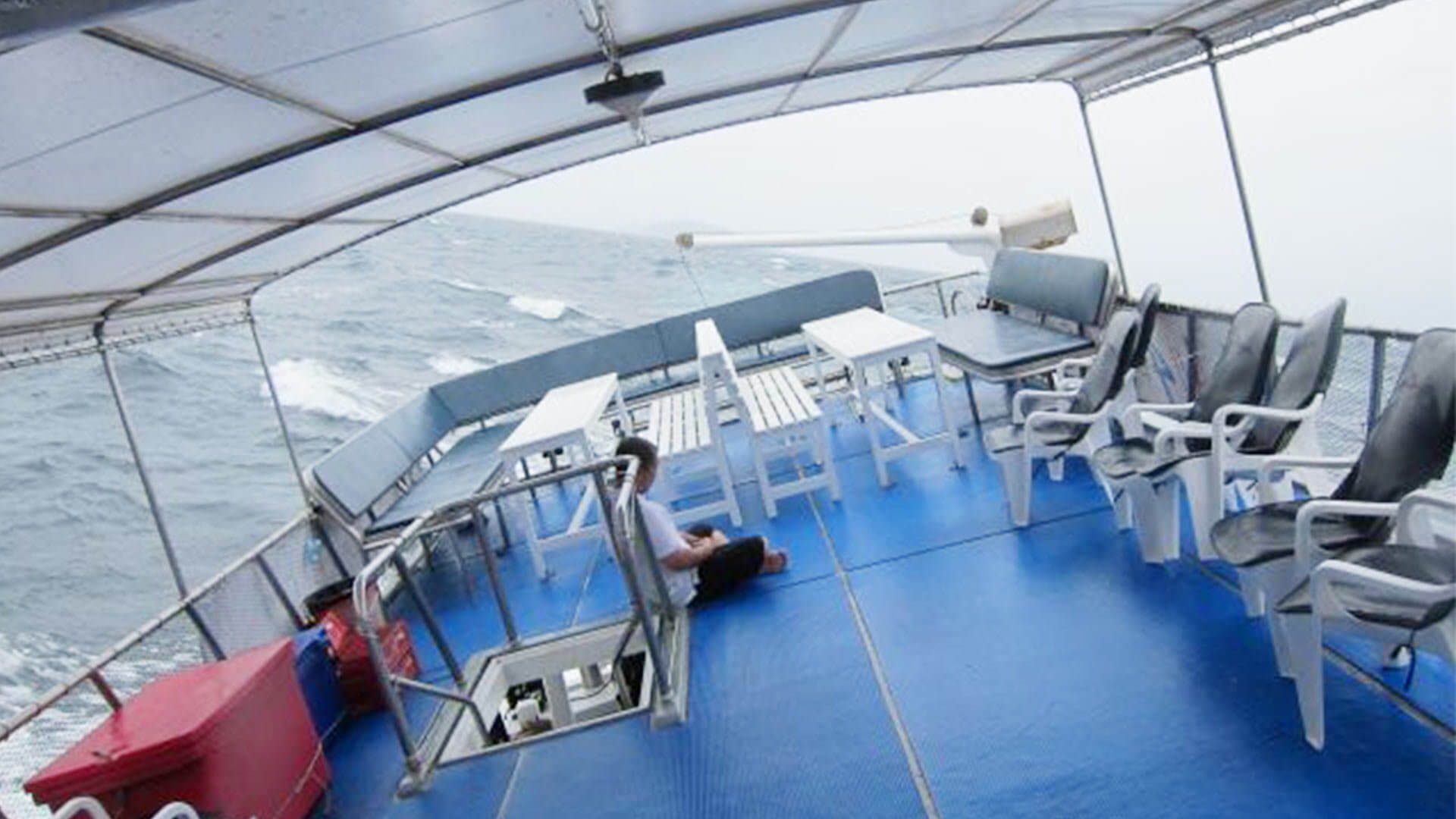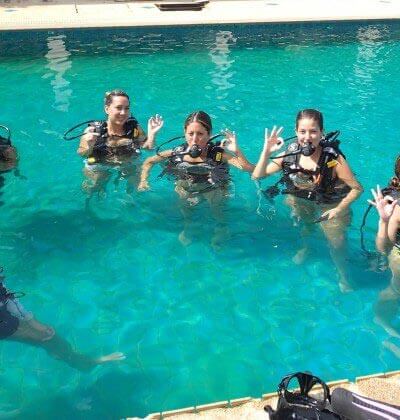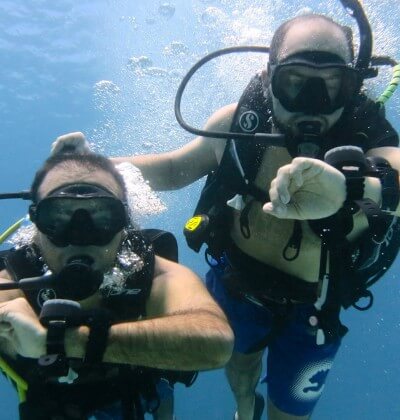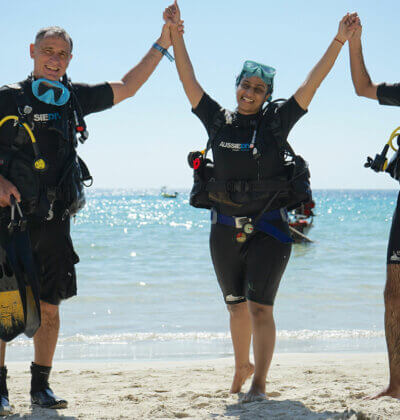Tips on How to Prevent Seasickness
As boat travel is a common part of scuba diving and unfortunately seasickness/ motion sickness effects 70% of the population. Here are some tips on how to prevent seasickness. Some are legitimately research and some may be myth.
What is Seasickness/Motion Sickness
Motion is sensed by the brain through different pathways of the nervous system including the inner ear, the eyes, and the tissues of the body surface. Your body has a few different motion sensory systems. They are located in the inner ear and eyes. We also have skin pressure receptors, and the muscle and joint sensory receptors.
When the body is moved intentionally, for example when walking, the input from all of the pathways are coordinated by our brain.Seasickness and motion sickness occurs when mixed signals are sent to the brain by the eyes and the inner ear. If you cannot see the motion your body’s feeling, or conversely, if you cannot feel the motion your eyes see, then it is likely you will develop some aspect or symptom of motion sickness.
The ability to conquer seasickness does improve with time and the more you travel on boats. When I started with my PADI Open Water and Advanced Open Water courses I was chronically seasick. By the time I reached instructor level I could handle the roughest seas we dived in. Chin up, it should get better.
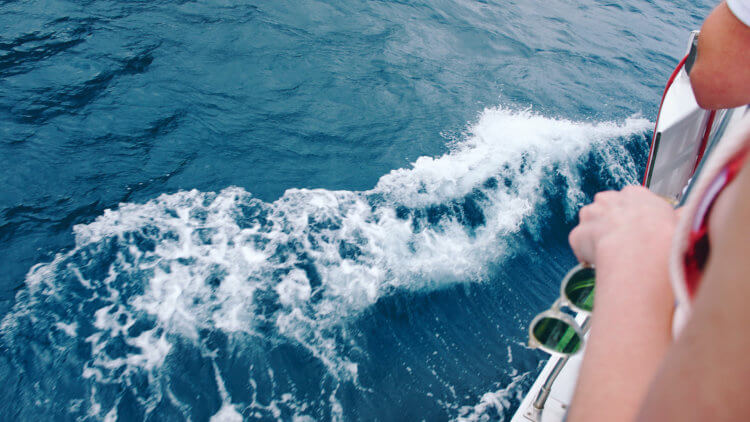
Waves on a boat Aussie Divers Phuket
1. Keep the Horizon in Sight
You want to continually glance at the horizon, keeping it in sight, but not staring at it. As your body adjusts to the new movements, use the horizon as your point of reference. It is suggested that facing forward on the boat is better that facing to the side. Facing forward should help manage their seasickness a little better. Looking at the horizon or fixed point gives your brain a fixed reference point & helps counteract the confusing signals from the balance centers in our ears
If you can’t look at the horizon, keep your eyes closed. This will reduce the conflicting signals between your eyes and inner ear.
2. Fresh Air
Having a breeze of fresh air and avoiding enclosed spaces, can help with seasickness. Lay down, close your eyes and listen to some music on the deck. You want to get your mind off being sick and let the music calm you down. Since anxiety contributes to seasickness, you are more likely to get sick if you board your dive boat expecting to feel sick.
3. Medication
If you are in the 70% of those that are prone to seasickness, you can try taking Dramamine before the trip. Dramamine is an antihistamine which can make you sleepy (if you have a long boat ride this may not be a bad thing). There is also a non-drowsy version. Dramamine is available over the counter in pharmacies.
It is recommended that you take medicine at least one to two hours before traveling. However a wise man suggested to me that you take one tablet at night before sleeping and one as soon as you rise. That method has worked with a few chronic motion sickness divers I know. Some doctors will recommend starting to take medications days in advance for severe cases.
If you get chronic motion sickness then it may be worth trying Scopolamine patches (Transderm Scop). Scopolamine patches require a prescription from a physician. But according to studies, they are more effective than the motion sickness antihistamine meclizine (Antivert or Bonine)
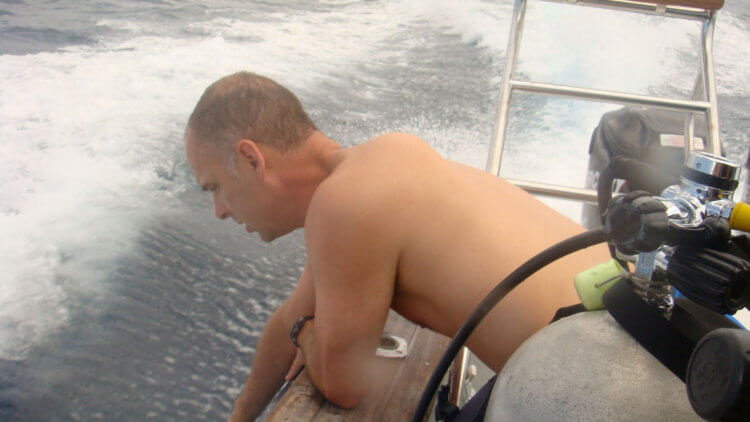
Seasick Scuba Diver Rough Seas
4. Don’t read, use phones or use cameras
Divers who develop motion sickness may have trouble reading books or text on phones or tablets. This again has a sensory disconnect between the inner ear and eyes. Reading will most likely make your symptoms worse. Consider using audiobooks, listening to music, or even a nap to pass the time.
6. Ginger Extract
During research, Ginger continually came up as a remedy
There are quite a number of different forms of ginger that you could try. There is ginger syrup, ginger capsules, ginger candy, or ginger ale (make sure it is made from real ginger).
However, probably the easiest form of ginger is brewed in a tea. It is inexpensive, delicious and can easily made on a boat. Ginger has been used to treat seasickness for centuries and is believed to have first been used by the ancient Chinese. It is not known exactly why ginger is so good at treating seasickness, but multiple studies around the world have found it can reduce or prevent seasickness altogether.
6. PSI Bands/Pressure to wrists
There have been a lot of studies that have shown that by simply applying pressure to your inner wrists, you can reduce seasickness.
An acupressure point along your wrist called the nei-kuan (P6) may give you quick relief. Place the index, middle, and ring fingers of your right hand on the inside of your left wrist, starting under the crease. Your nei-kuan point is underneath your index finger, between the wrist tendons. By applying firm pressure on one or both wrists for around four to five seconds you may be able to alleviate some motion sickness symptoms.
There are even products you can purchase designed to apply the pressure for you. These date back to ancient practices such as acupuncture. These are elastic bracelets with a plastic stud attached to the inside of the band. This stud places pressure on an acupressure point that is believed to relieve nausea and vomiting. They are inexpensive and a natural option. Some divers swear by them, some experience no change to symptoms.
7. Good smells and bad smells
Personally, this is the one that sets me off. A strong smell whether it be If you happen to be strong perfume, food, the exhaust from the engine or other sick people it can make my nausea worse. It has been recommended to avoid all strong smells .This is where the fresh air can help clear.
Certain scents, like pure ginger and lavender essential oils, may also aid. Here is Thailand there are many oils available at most convince stores. Peppermint essential oil has been used to reduce nausea in patients in hospital. There are many ways to use oils. My preference is to place a few drops over a tissue and breath from it when required
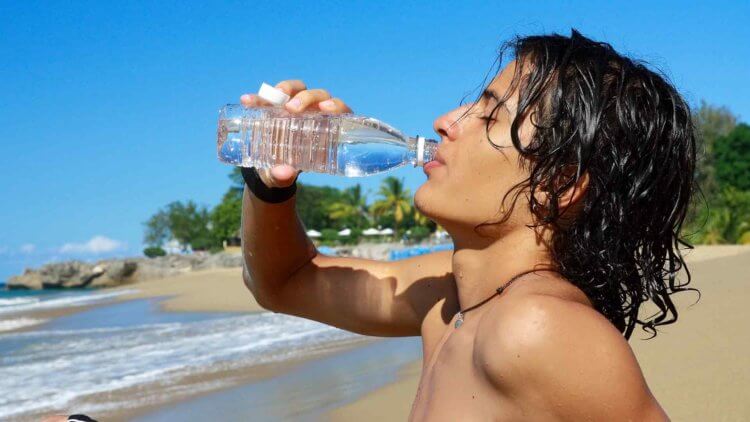
Drink Water Dehydration Aussie Divers
8. Stay Hydrated
As always with scuba diving, it is always important to stay hydrated. Dehydration can cause symptoms of seasickness to start or make them worse if you are already feeling poorly. Avoid alcohol.
Green Apples
Eating green apples or artificial orange and citrus candy to combat seasickness is a trick that cruise crew members and seasoned scuba divers swear by.
Licorice root lozenges
Licorice root is used to soothe stomach ulcer pain, stomach acid irritation, and help digestion. It may also help ward off nausea and vomiting. They are considered herbal supplement so please take them as directed.
Coke
An article in Sports Diver suggests having a Coke. It contains phosphoric acid and sugars, the same ingredients you’ll find in Emetrol, an over-the-counter anti-nausea drug.
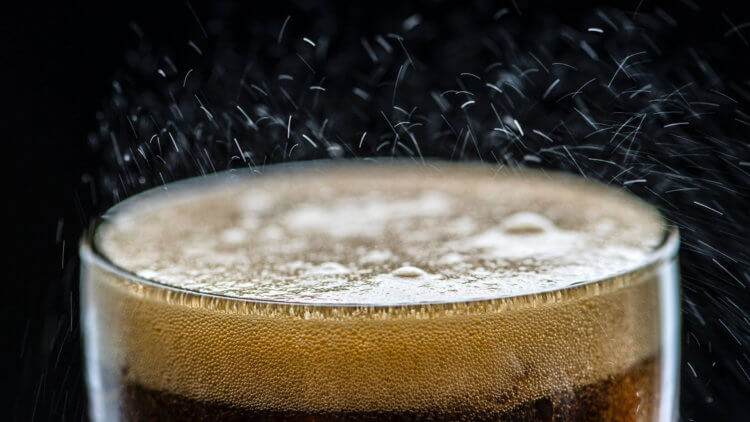
Coke Bubbles Aussie Divers
If you need to be sick find the leeward side (wind at your back) of the boat.Please remember, do not go to the toilet to do this or in a trash can. Try to be considerate of others. After being sick stay in fresh air, avoid going below deck or into confined spaces. The stearn (back) of the boat moves less than the bow (front) and can be a good place to position yourself if you can still have fresh air. Also being on the deck that is level with the water will mean less movement than being on upper decks
Rest afterwards.
Posted in Diving Health on .

